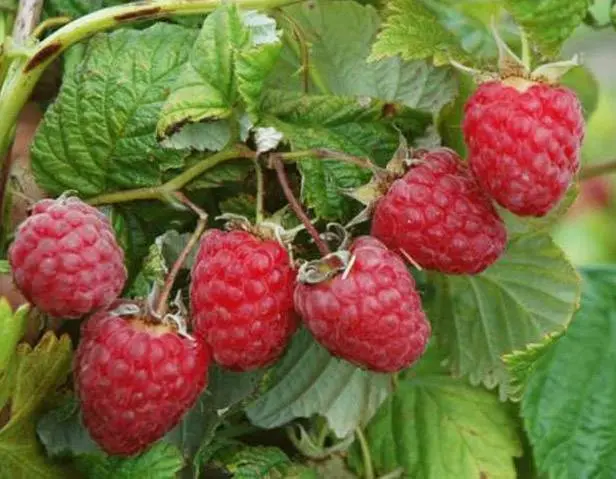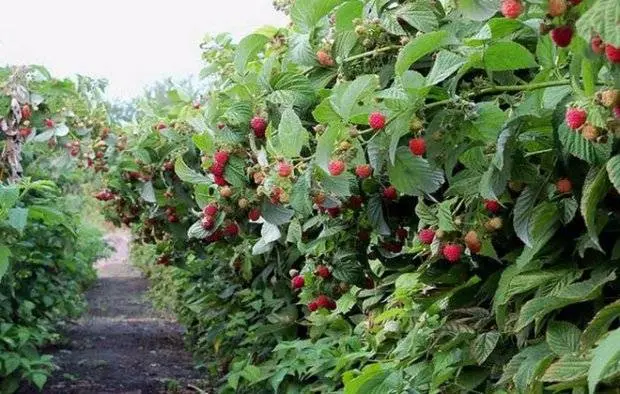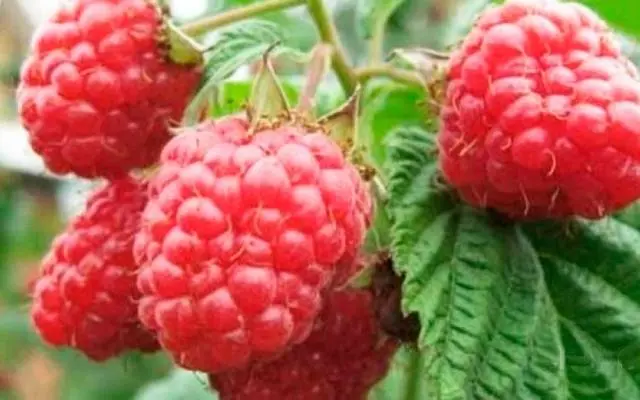Contents
Perhaps, among the many varieties of raspberries, the most popular among gardeners are varieties bred by the master of raspberry cultivation – the famous breeder I.V. Kazakov. His contribution to the development of domestic selection is truly invaluable. Many varieties, bred by him back in the distant 70-80s of the last century, are still able to compete in many respects with modern foreign and raspberry varieties. For example, raspberry Skromnitsa by Kazakov himself is mentioned in the list of the best varieties of medium ripening. She has many advantages, although not without drawbacks. You can find a description of the raspberry variety Skromnitsa with photos and reviews of those who grew it on their plots in this article.

History of creation and description of the variety
In the late 70s, a group of breeders of the Kokinsky stronghold, located near Bryansk, under the leadership of I.V. Kazakov, the raspberry variety Skromnitsa was bred by crossing two varieties: Ottawa and Bulgarian Rubin. Back in 1982, the variety was accepted for state variety testing, and only after almost 10 years, in 1990, it was included in the State Register of Breeding Achievements of Our Country. This raspberry variety differs in that it was recommended for cultivation in most regions of Our Country:
- Northwest;
- Central;
- Volga-Vyatka;
- Central Black Earth;
- North Caucasian;
- Middle Volga;
- West Siberian.
This became possible due to the fact that raspberries are distinguished, on the one hand, by high winter hardiness, which makes it possible to grow them in the north. Good drought tolerance, on the other hand, is favorable for growing Skromnitsa raspberries in the hot and dry conditions of the southern regions.

The bushes are formed very well – they are distinguished by an average strength of growth (they reach a height of no more than two meters), they branch well, but at the same time they are not widely spread in different directions. Shoots tend to grow straight. The big advantage of the raspberry variety Skromnitsa is the almost complete absence of thorns on the shoots. Only in the lowest part of the shoots are medium-length, non-thorny, greenish thorns observed.
Raspberry shoots Skromnitsa are also covered with an intense wax coating, which is able to prevent excessive evaporation of moisture, due to which the bushes are characterized by increased drought resistance.
During the season, from 7 to 10 shoots are formed on the bush. This is also very convenient, since raspberries do not scatter much to the sides, while it is quite possible to collect a sufficient amount of planting material for reproduction.
On average, about 2,2 kg of raspberries can be harvested from one bush. Under favorable conditions, the maximum yield per bush was 3 kg. The yield may not be the most outstanding, but it is stable from year to year. You can also note the friendly ripening of berries, which are collected literally in one or two times. With industrial cultivation, the yield of Skromnitsa raspberries is estimated from 80-90 to 120 centners of fruits per hectare.
As for resistance to diseases, the Skromnitsa raspberry is not at all affected by one of the most common raspberry ailments – anthracnose. It also shows high resistance to the raspberry mite, but it can suffer greatly from the spider mite.

But snowless winters and frequent thaws, raspberries of this variety are able to survive quite calmly due to the fact that the bark at the base of the shoots has good resistance to decay.
It has already been said about the frost resistance of the variety, we can only add that in almost all the regions of Our Country listed above, raspberries of the Skromnitsa variety can be grown without shelter for the winter.
Raspberries of this variety are also known for their drought tolerance, so even without much watering, the berries on the bushes will still be. But in order to obtain maximum yield, it is still better, if possible, not to torment the bushes and water them abundantly, especially during the period of flowering and fruit formation. In this case, the return will also be good.
Characteristics of berries
The berries of the Skromnitsa variety are distinguished by the following characteristics:
- The fruits have a standard round-conical shape;
- The size of the berries is small – the weight of one berry varies between 2-4 grams;
- The color of the fruit is also standard – pink-raspberry;
- Separability of berries from the fruit is average;
- Taste qualities are estimated at 4,2 points, a berry of dessert taste, with a slight sourness;

- Berries have no aroma;
- Fruits contain 8,8% sugars, 22 mg/100 g of ascorbic acid;
- Berries have a high density, do not crumple and do not flow during storage – they are well transported;
- The purpose of the berries is universal – they make tasty and healthy compotes, preserves, jams and other preparations.
Advantages and disadvantages of the variety
Raspberry variety Skromnitsa has many advantages that have allowed it to be popular in many regions of our country for several decades.
- The raspberry variety Skromnitsa is suitable for mechanized harvesting under industrial growing conditions.
- The absence of thorns makes caring for raspberries and harvesting berries very convenient.
- High transportability of berries and their excellent presentation.
- Winter hardiness, resistance to decay and drought resistance.
- Complete immunity to anthracnose.

Among the shortcomings of the variety, its susceptibility to gray rot and spider mites can be noted.
Reviews of gardeners
Raspberry Skromnitsa evokes positive feedback from all owners of household plots, where it grows, primarily due to its unpretentiousness and stable fruiting.
Conclusion

Raspberry Skromnitsa does not have outstanding characteristics, so if your goal is to surprise neighbors and acquaintances, then look for some other more suitable variety. But for gardeners who, for various reasons, cannot pay much attention to their plant pets, this raspberry will be an excellent choice. Even in the most unfavorable years, you most likely will not be left without a raspberry harvest.










